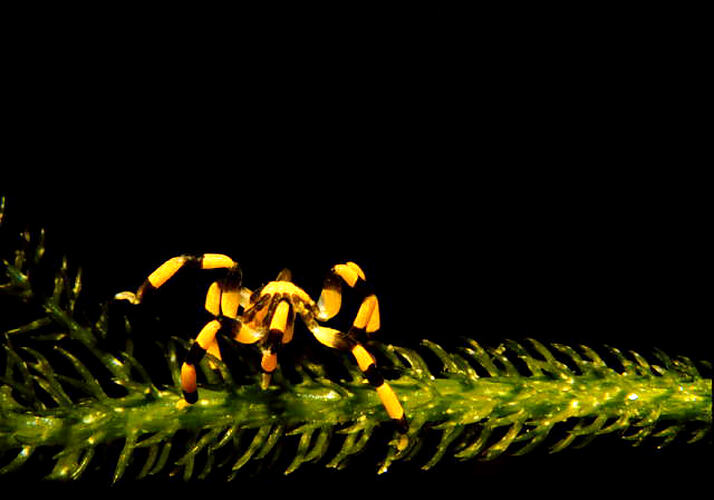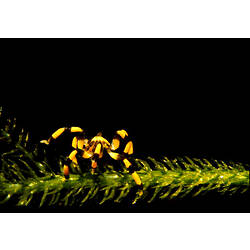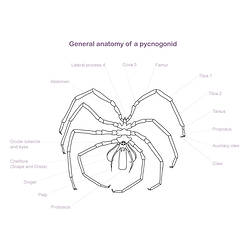General Description
Body with proboscis projecting outward from front, with the mouth at the tip. Central body (trunk) behind the proboscis, with a raised, rounded area (tubercle) bearing eight eyes. Eight segmented walking legs attached to the sides of the trunk. Short, inflated abdomen behind trunk. Leg span about 3 cm.
Biology
This common species is an active swimmer. They breed from November to December, sometimes extending through to March. Their scientific name refers to their protruding jaws. Males carry the eggs, holding them between body parts called ovigers that hang under the animal.
Distribution
South-eastern Australia.
Habitat
On bryozoans, to depth of 90 m.
More Information
-
Animal Type
-
Animal SubType
-
Maximum Size
3 cm
-
Habitats
-
Endemicity
-
Commercial
No
-
Conservation Statuses
DSE Advisory List: Not listed, EPBC Act 1999: Not listed, IUCN Red List: Not listed
-
Depths
Shallow (1-30 m), Deep ( > 30 m)
-
Water Column Locations
On or near seafloor
-
Taxon Name
-
Scientific Author
Clark, 1963
-
Common Name
Pycnogonid
-
Other Names
Sea spider
-
Phylum
-
Subphylum
-
Class
-
Order
-
Family
-
Genus
-
Species Name
cheilorhynchus




